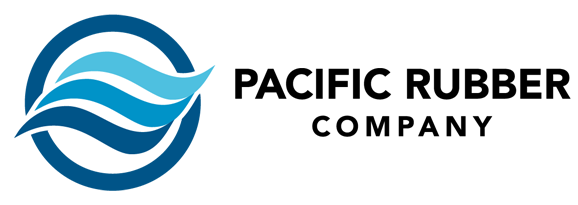EPDM Rubber
EPDM rubber, which stands for Ethylene Propylene Diene Monomer rubber, is a synthetic elastomer known for its excellent weather resistance and versatility. It is widely used in various industries due to its unique combination of properties. EPDM rubber is highly resistant to ozone, UV radiation, and weathering, making it ideal for outdoor applications. It can withstand extreme temperatures ranging from -50°C to 150°C, making it suitable for both hot and cold environments. EPDM rubber also exhibits excellent electrical insulation properties, making it a popular choice for electrical insulation components.
One of the key advantages of EPDM rubber is its outstanding resistance to chemicals and acids. It is compatible with a wide range of fluids, including water, steam, alkalis, and various organic and inorganic chemicals. This chemical resistance makes EPDM rubber a preferred material for gaskets, seals, and hoses used in industrial and automotive applications.
EPDM rubber is also known for its excellent elasticity and flexibility. It has a low compression set, meaning it can recover its original shape after being compressed or stretched, making it durable and long-lasting. EPDM rubber is used in various applications, such as roofing membranes, automotive weatherstripping, seals and gaskets, electrical insulation, and even in playground surfaces due to its shock-absorbing properties.
EPDM rubber is a versatile synthetic elastomer with exceptional weather resistance, chemical resistance, and flexibility. Its ability to withstand extreme temperatures and its excellent electrical insulation properties make it a sought-after material in numerous industries. Whether it’s protecting buildings from the elements or providing reliable sealing in automotive applications, EPDM rubber continues to be a popular choice for its durability and performance.
Ethylene propylene diene monomer, or EPDM rubber, offers outstanding qualities for outdoor and hot-weather applications. EPDM offers good resistance to alkalis, acids, and oxygenated solvents, as well as great resistance to heat, ozone, and sunshine. Excellent temperature adaptability and high water and steam resistance. It is extremely extensible and can be cured using sulfur and peroxide.
Common Name:
EPDM, EP Rubber
Generally Resistant To:
Oxidation, Ozone, Sunlight, Abrasion, Fireproof Hydraulic Fluids, Water, and Alkalis
ASTM D 2000 / SAE J200 Classification:
BA, CA
Chemical Name:
Ethylene-propylene Terpolymer
Generally Attacked By:
Kerosene, Hydrocarbons, and Solvents
MIL-R-3065 / SAE J-14 / MIL-STD-417 Classification:
RS
ASTM D-1418 Designation:
EPDM
Elongation:
100% to 700%
Hardness Range (Durometer Shore A):
30 to 90
Compression Set:
Fair to Good
Abrasion Resistance:
Good to Excellent
Impact Resistance:
Very Good
Rebound Rating:
Fair to Very Good
Tear Resistance:
Fair
Flame Resistance:
Poor
Flex Cracking Resistance:
Good to Very Good
Minimum Service Temperature:
-75°F
Maximum Service Temperature:
+350°F
Recommended Shelf Life:
5 to 10 years
Ozone Resistance:
Excellent
Steam Resistance:
Excellent
Weather Resistance:
Excellent
Oxidization Resistance:
Excellent
Gas Permeability:
Fair to Good
Sunlight Resistance:
Outstanding
Water Resistance:
Excellent
Radiation Resistance:
Good, 1 x 105 Ga Gy
Poor, 2 x 106 Ga Gy
Acetone:
Recommended: Little to Minor Effect
Amonium Hydroxide:
Recommended: Little to Minor Effect
Animal Fats:
Minor to Moderate Effect
Carbon Dioxide:
Minor to Moderate Effect
Chlorine:
DRY: – – –
WET: Moderate to Severe Effect
Fluorine (Liquid):
Moderate to Severe Effect
Fuel Oil:
NOT RECOMMENDED
Gasoline:
NOT RECOMMENDED
Hydrochloric Acid 37%:
HOT: Moderate to Severe Effect
COLD: RECOMMENDED: Little or Minor Effect
Hydrochloric Acid Concentrate 37%:
HOT: NOT RECOMMENDED
COLD: Minor to Moderate Effect
Kerosene:
NOT RECOMMENDED
Methyl Ethyl Ketone:
RECOMMENDED: Little or Minor Effect
Mineral Oil:
NOT RECOMMENDED
Naptha:
NOT RECOMMENDED
Natural Gas:
NOT RECOMMENDED
Nitric Acid:
Concentrate: Moderate to Severe Effect
Dillute: Minor to Moderate Effect
Red Fuming: NOT RECOMMENDED
Petroleum:
Below 250: NOT RECOMMENDED
Above 250: NOT RECOMMENDED
Phosphoric Acid:
20%: RECOMMENDED: Little or Minor Effect
45%: Minor to Moderate Effect
Propane:
NOT RECOMMENDED
Salt Water:
RECOMMENDED: Little or Minor Effect
Skydrol:
Skydrol 500: RECOMMENDED: Little or Minor Effect
Skydrol 7000: RECOMMENDED: Little or Minor Effect
Sodium Hydroxide:
RECOMMENDED: Little or Minor Effect
Sulfuric Acid:
Concentrate: Minor to Moderate Effect
Dillute: Minor to Moderate Effect
20% Oleum: NOT RECOMMENDED
Toluene:
NOT RECOMMENDED
Transformer Oil:
NOT RECOMMENDED
Vegetable Oils:
RECOMMENDED: Little or Minor Effect
Vinegar:
RECOMMENDED: Little or Minor Effect
- Depending on the storage conditions, the actual shelf life could change significantly.
- Store at or below 75 °F in a cool, dry area.
- Keep clear from open flames or direct heat.
- Stay away from contact with any liquids or solvents.
- Store away from direct sunlight.
- Keep goods sealed or wrapped to reduce moisture absorption.
- Keep in a relaxed state free of tension, compression, or other deformation when storing.
For additional information on how to keep your rubber items appropriately, see Rubber Storage Conditions.


